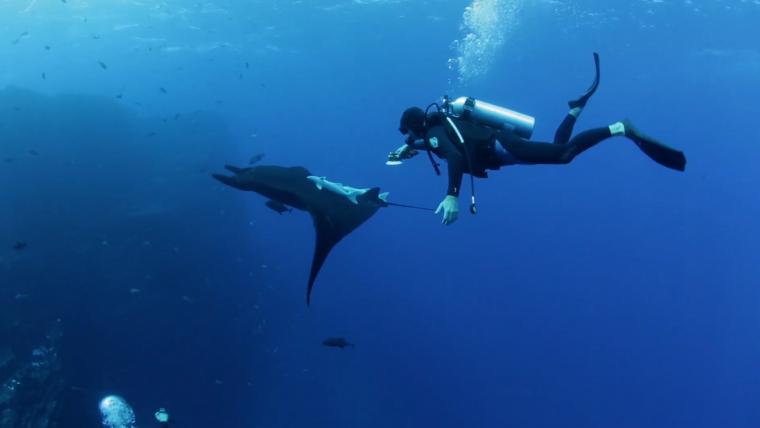
Finder of largest manta ray population spurs empathy for the species
Beneath the ocean’s surface swims a mysterious and intelligent creature – the manta ray. This species has been around for 28 million years and is known for having the largest brain of any fish. Manta rays are quite an imposing sight, weighing over 2 000 kilograms with a wingspan that can reach up to eight metres. However, these cartilaginous fish are endangered by human-driven activities. In 2011, marine biologist Guy Stevens founded the Manta Trust with the sole goal to lessen their further decline.
“There was a real need to have a coordinated global approach to conserving these threatened species,” he says. Manta rays are crucial to the marine world as they maintain the plankton population. But the creatures are under siege due to being overfished, caught as bycatch, or poached for the illegal gill plate trade. “One of the key areas of the Manta Trust is to raise awareness of the threats facing these animals,” Stevens says. “People will only care about something if they feel empathy towards it.”
The impact of his organisation reverberates globally with 25 initiatives in multiple countries. Through the Maldivian Manta Ray Project, Stevens and his team discovered 4 900 reef manta rays – the largest population of this species in the world. They have supported the preservation of this group through the creation of the Hanifaru Bay Marine Protected Area and achieving UNESCO recognition for the Baa Atoll as a Biosphere Reserve. Carrying out long term studies of the creatures, they are uncovering how best to ensure their continued protection. In Peru, the organisation is also making strides in moving fishing communities towards sustainable ecotourism, an underdeveloped industry in the region. “Connecting with nature, with your community, these are the things that will protect us and protect our planet,” Stevens says.
Footage by the Manta Trust was used in the creation of this film.






























Please sign in to leave a comment